Can 'super coral' save the Great Barrier Reef?
- Published
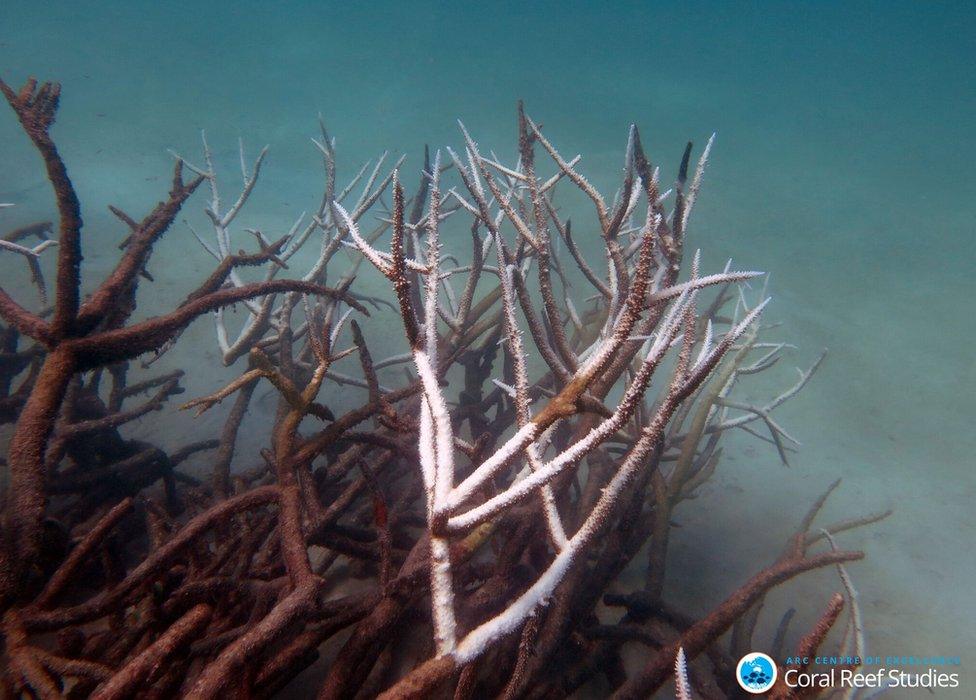
Warm currents have left huge swathes of the Great Barrier Reef affected by bleaching
As fears mount over the Great Barrier Reef's worst coral bleaching event in recorded history, biotechnologists in Australia are looking at ways to grow "super coral" that is more tolerant of global warming, writes Ian Lloyd Neubauer.
Heat-resistant coral is not an artificial construct. The mutation occurs naturally in the remote Kimberley region of north-west Australia, where the world's longest tropical tides create super-heated tide pools where corals have found ways to adapt and survive.
"The coral of the Kimberley is very unique because it's exposed to extreme temperature swings on a daily basis and to direct sunlight," says Dr Verena Schoepf, a University of Western Australia researcher and lead author on the first peer-reviewed study on heat-resistant coral.
"They can tolerate conditions most corals can't, which makes them very interesting to study because they're already coping with climate change," she says.
Coral bleaching occurs when changes in temperature, light or nutrients make coral eject tiny photosynthetic algae called zooxanthellae that live on their exoskeletons. The absence of zooxanthellae - coral's primary food source - kicks off a downhill spiral that turns coral white and brittle, and makes it vulnerable to disease and colonisation by seaweed.
Bleaching is not necessarily fatal for coral. When record-high sea temperatures saw more than half the Great Barrier Reef affected by mass bleaching events in 1998 and 2002, 95% of all affected coral recovered once sea temperatures normalised.
But with high sea temperatures along Australia's coast prolonged by greenhouse gas emissions and the El Niño weather pattern, experts fear the Great Barrier Reef won't have time to recover before it's hit by another bleaching event.
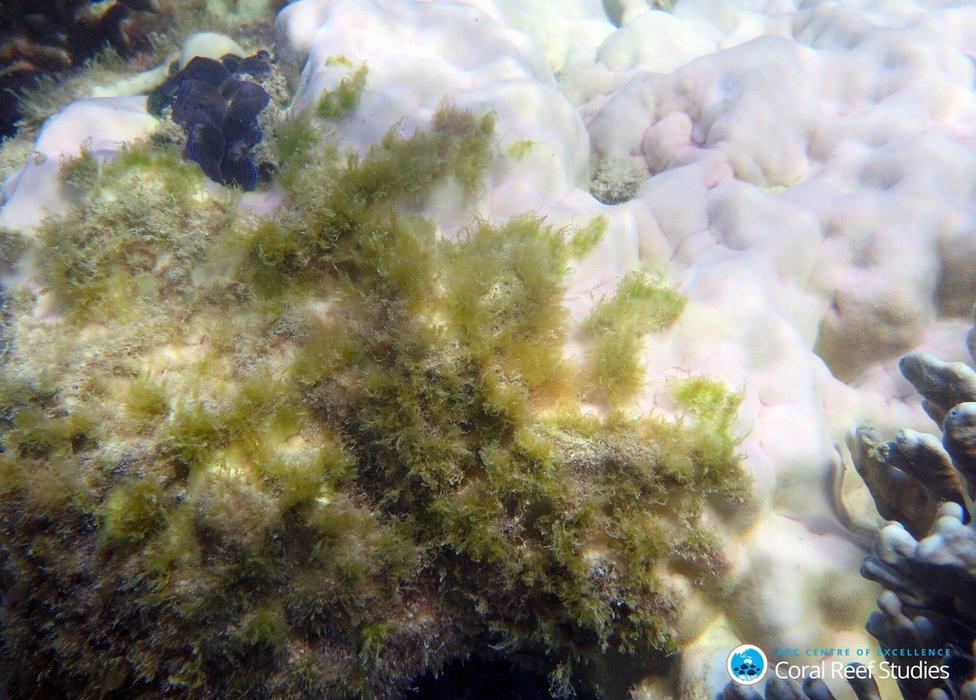
This image shows dying coral colonised by seaweed at Lizard Island during the recent bleaching event
"We've never seen anything like this scale of bleaching before," says Prof Terry Hughes, convenor of a National Coral Bleaching Taskforce that made global headlines last month when it released survey results showing 93% of the reef had been affected by bleaching.
"Towards the southern end, most of the reefs have minor to moderate bleaching and should soon recover. [However] north of Port Douglas, we're already measuring an average of close to 50% mortality of bleached corals. At some reefs, the final death toll is likely to exceed 90%."
Making super coral
Dr Schoepf's team is yet to pinpoint the exact gene Kimberley coral uses to defend itself against bleaching. Once the box is ticked, it's hoped the heat-resistant gene can be sequenced with the genes of other corals to give them a better chance of survival.
For now, Dr Schoepf is looking at a simpler solution - transplanting super coral on to bleached reefs.
"We're running a long-term experiment where we keep [Kimberley] coral in the lab and expose it to much cooler waters like those further south in Australia," she says. "Then we test to see if they maintain their superior capacity to resist heat."
Dr Schoepf is also "training" regular coral to better recover from bleaching by exposing it to non-fatal bleaching events. The trained coral is then transplanted back in the sea in the hope it will genetically transfer its learned resistance to its offspring.
"We stimulated a small bleaching event in a tank and then put them back. What we found is that those corals were better able to deal with heat stress, but not immune to bleaching," Dr Schoepf says.
Ethical dilemmas
Crossing the species boundaries of different corals could open a Pandora's box of unintended consequences, according to bioethicists.
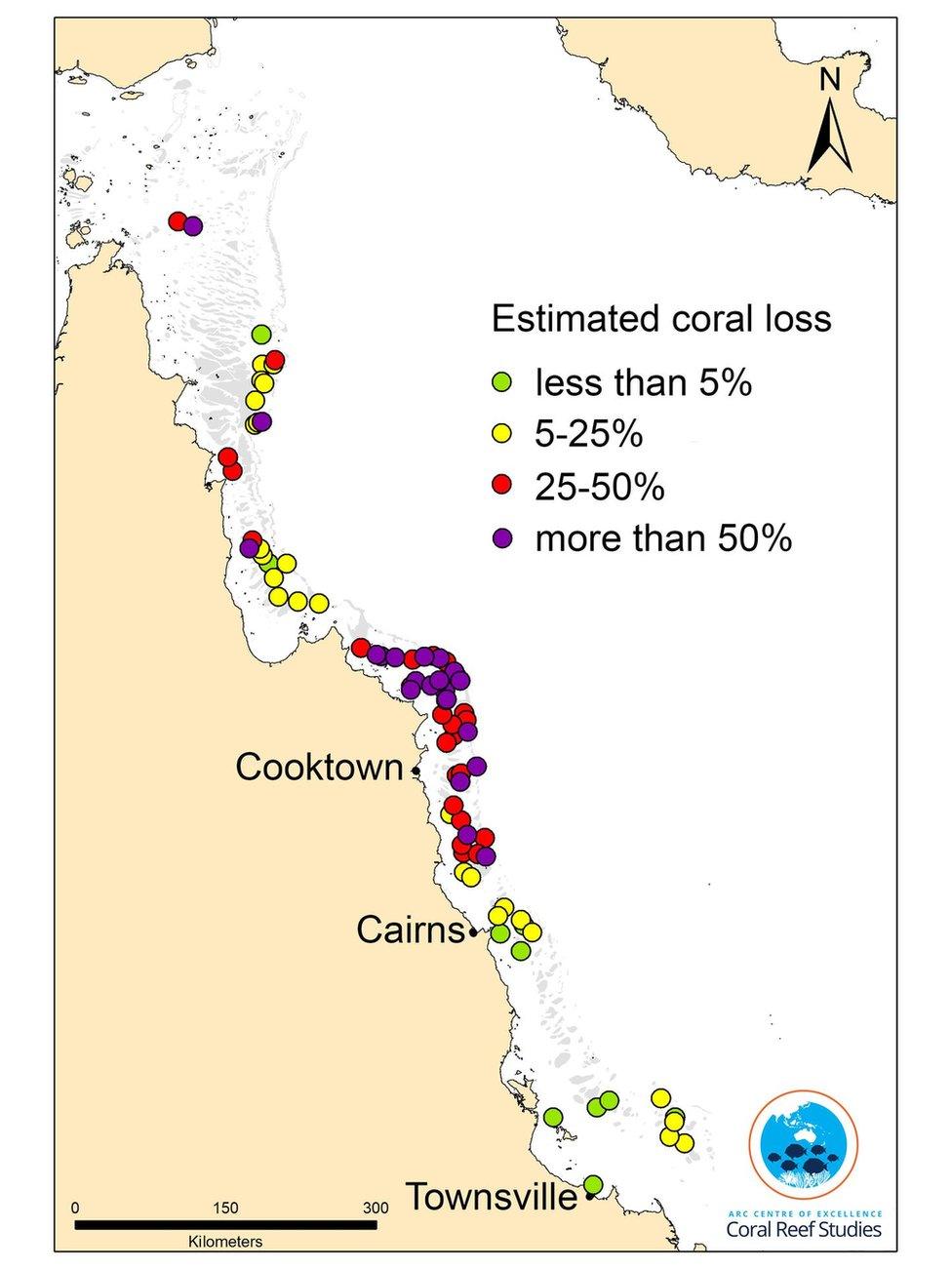
"No-one fully understands the ecology of reefs, so by putting a genetically modified organism on it you can't possibly know the unintended ecological implications," says Prof Rob Sparrow, an expert in applied ethics at Monash University. "It's foolish and unwise."
Prof Sparrow also argues that the genetic engineering of coral distracts from a solution governments already have to prevent coral extinction.
"When people read a story about a high-tech solution, it makes us feel good in that it distracts us from what we should really be doing - moving towards a zero emissions economy," he says.
Prof Paul Komesaroff, director of Australia's Centre for Ethics in Medicine and Society, raises a different concern.
"The closest analogy to this would be GM [genetically modified] crops, where strains of rice are constructed to better resist pests," he says. "And one of the outcomes of that has been that companies own the intellectual property to produce those crops."
"I'm sure the scientists behind this are doing it for the right reasons, but they won't be able to turn their discovery into a commercially viable option without capital investment," Paul Komesaroff says.
"This is how biotech works in the real world; it's driven by profit. So we would potentially be looking at a scenario where the Great Barrier Reef is owned by a company like Monsanto. And that would be a game-changer."
A new hope
Above and beyond the ethical dilemmas lies the seemingly impossible task of applying transgenics to an organism as large as the Great Barrier Reef.

Researchers survey bleached corals in shallow water in the Kimberley region, Western Australia
"The limitations of this approach are how to scale up from a test-tube or aquarium to the real world," says Prof Hughes of the National Coral Bleaching Taskforce. "No-one has ever restored a reef with all of its diversity on any meaningful scale."
Then there's the fact that coral bleaching has recently been observed in the Kimberley region, too.
"I spoke to the traditional [Aboriginal] landowners, and they told me they cannot remember a time this has ever happened before," Dr Schoepf says.
But there may be hope yet, with an even stronger species of super coral now identified 1,000km (620 miles) south of the Kimberley in the Pilbara region of Western Australia.
"We've been studying the reef for the past few years and we've found virtually no evidence of coral bleaching - even during the current strong El Niño event," says Damian Thomson, an experimental scientist with the Pilbara Marine Conservation Partnership.
He adds: "We're not looking into transgenics at the moment. But the world is going to need a multi-pronged approach to manage coral systems and that is likely going to involve a wide range of experimental and genetical techniques.
"We need to do whatever we can to help coral survive."
- Published28 October 2014
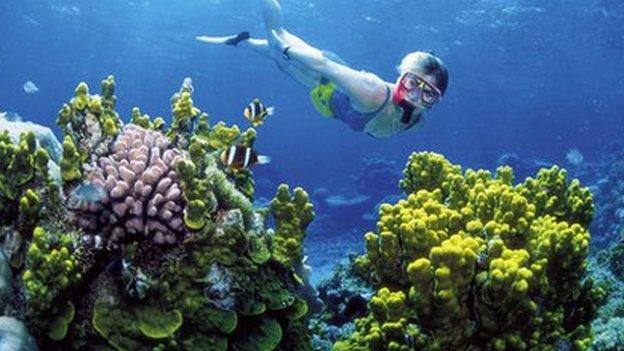
- Published20 April 2016
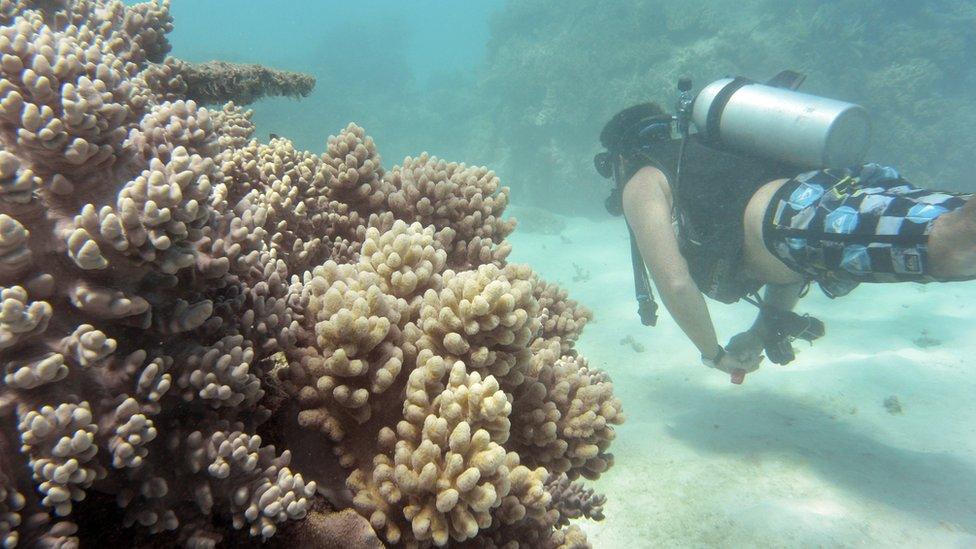
- Published7 June 2016
